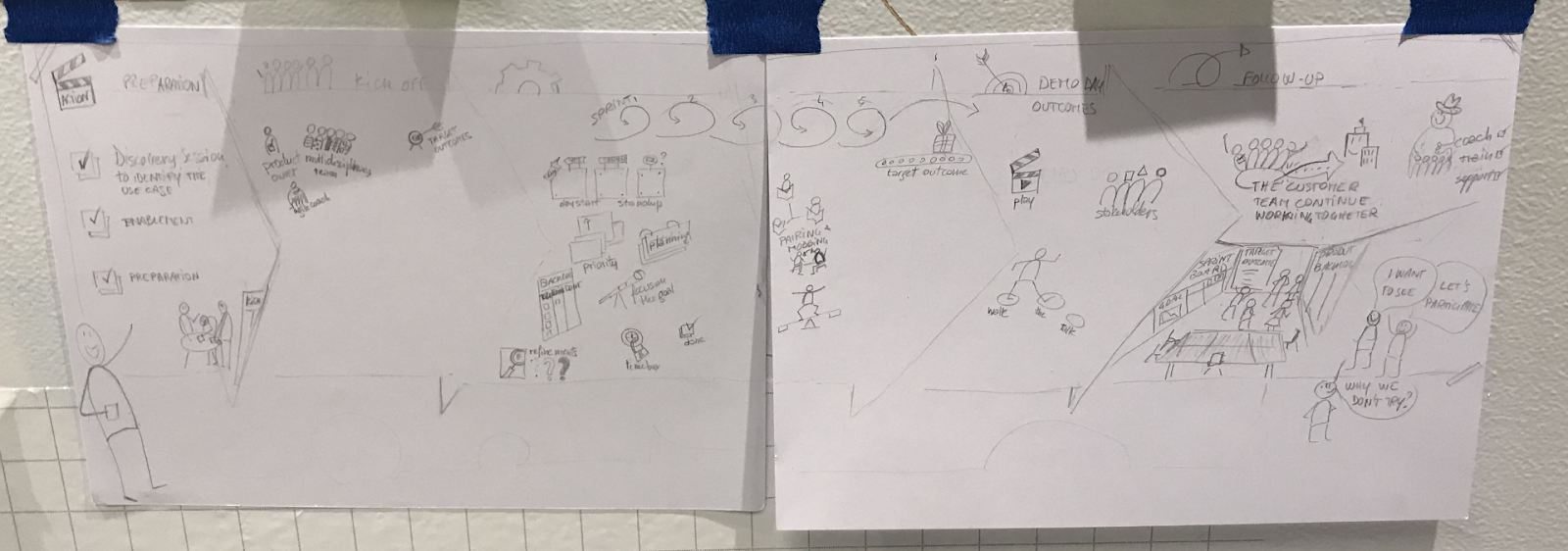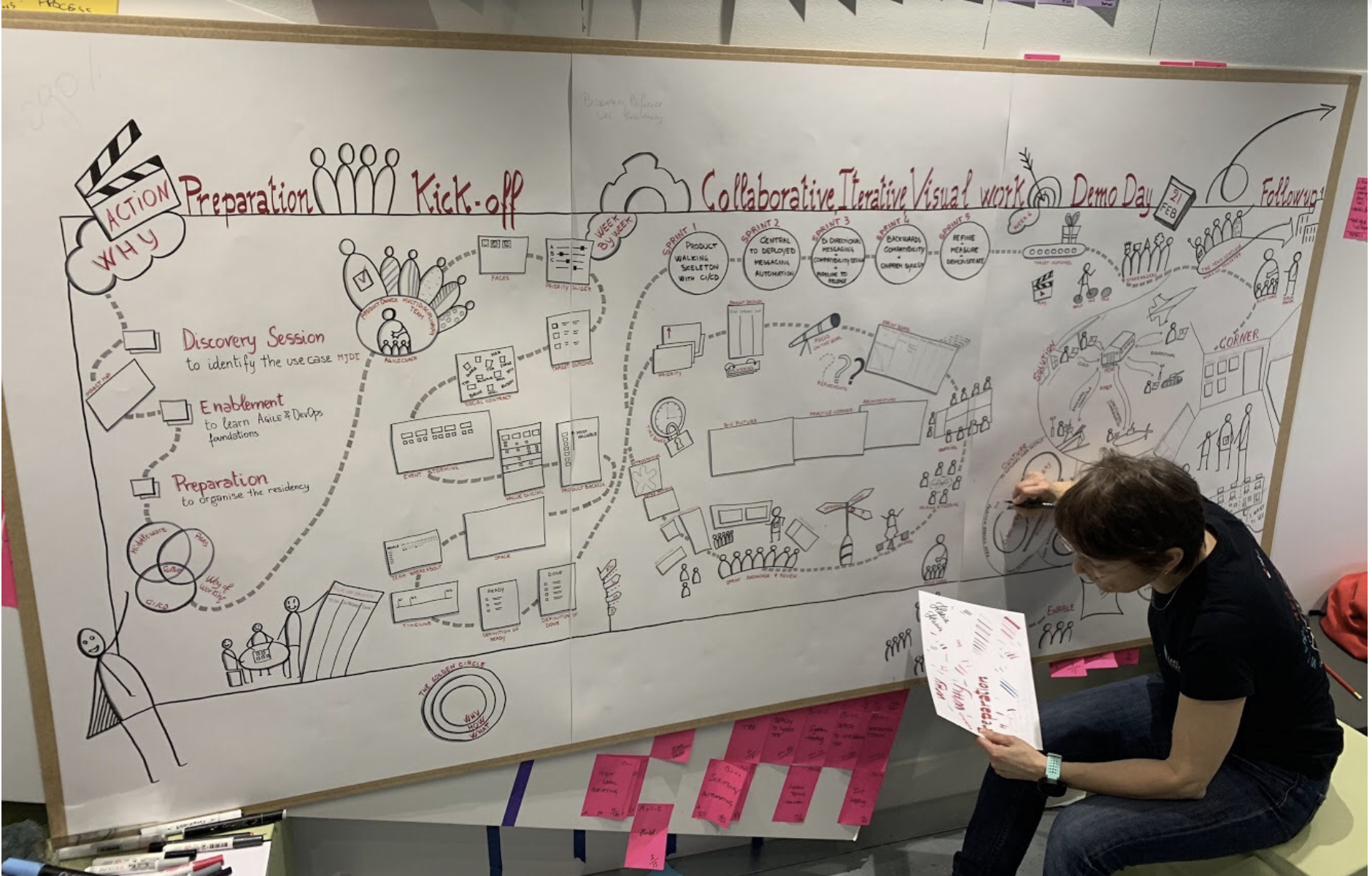Double Diamond
A structured approach to tackle challenges in four phases, from exploring to taking focused actions.
Ilaria Doria
Darpan Sunwar
What Is Double Diamond?
This is a practice used in the design process or design workshop and it should have four phases:
- Discover: Understand what the problem is, this means speaking to and spending time with people who are affected by the issues.
- Define: The insight gathered from the discovery phase can help to define the challenge in a different way.
- Develop: Give different answers to the defined problem, seeking inspiration from elsewhere and co-designing with a range of different people.
- Deliver: Involves testing out different solutions at small-scale, rejecting those that will not work and improving the ones that will.
Design workshops can be used to innovate your business.
You can use the double diamond also in the context of Visual thinking and sketchnoting, for building a poster using an iterative approach with continuous diverging and then converging for elements, metaphors, colours from start to end.
An example is when I wanted to explain the journey of the Residency in a one-(large)-page summary for the Residency (for a final Demo, but also for any other customer visiting the LAB). The flow of the journey was one of the most important things I wanted to express.
You can apply the same process to any poster, this is just an example.
Why Do Double Diamond?
It's useful to break down problems in any complex system, be it business, government, or social organizations to find creatively possible solutions.
How to do Double Diamond?
Typically multiple competences are involved in a workshop to combine creativity and rationality and it’s very important to put the voice of the customer at the center of the Idea and Design.
The process of designing has iterative steps of diverging and converging:
- Discover / Research: Diverge by exploring the idea by doing analysis, brainstorming and prioritizing
- Define / Synthesis: Converge by focusing on the right idea
- Develop / Ideation: Diverge by generating potential solutions for .eg: prototype
- Deliver / Implementation: Converge by Iterating with the solution that works through validation.
The approach used for Visual thinking was the following:
- Prepare the visual: identifying goal, target audience and how you want to deliver it. Identify the content (diverge) from the most important to the less important. Decide what to keep and divide in categories (converge)
- Metaphors: Ideate the metaphors (diverge) select the best metaphor/s (converge)
- Layout and coherency: Build/copy a collection of simple icons (diverge) and decide the layout coherency (diverge and converse) for colours, lettering and pens’ size.
- Visual hierarchy: iteratively you can decide the number of iterations you need. I started to articulate visually the sketch note with the following steps:
-
- The flow is one of the most important aspects to be able to use the board as a reference for the storytelling. I tested and changed the flow on a small A4, before finalising the content. At every iteration I showed someone what I was doing to collect feedback. This was extremely important!
- I started a first sketch on a first on A4 (pencil)
- A second on a long brown paper (with sticky notes and pencil), deciding the size & type of the support
- The last on thick paper on the final board (120 cm x 240cm)


Links we love
Check out these great links which can help you dive a little deeper into running the Double Diamond practice with your team, customers or stakeholders.